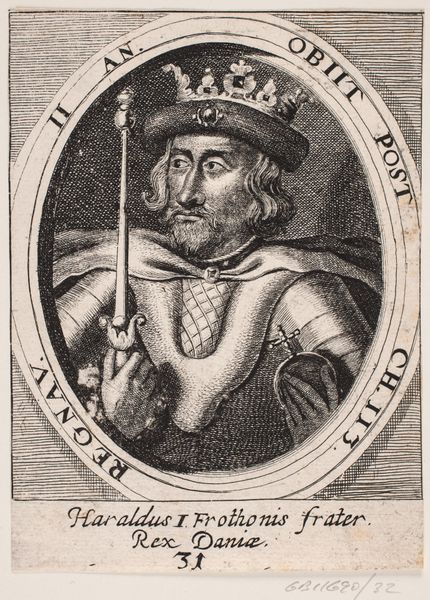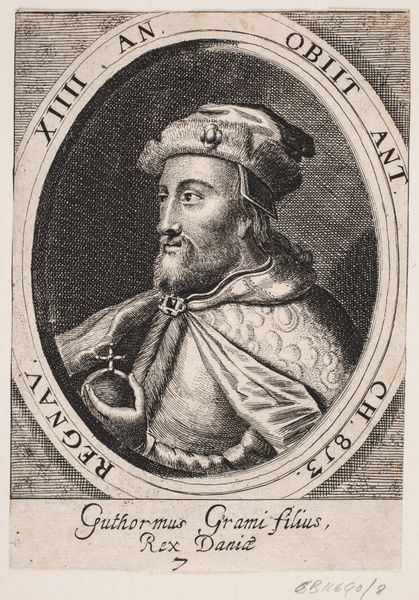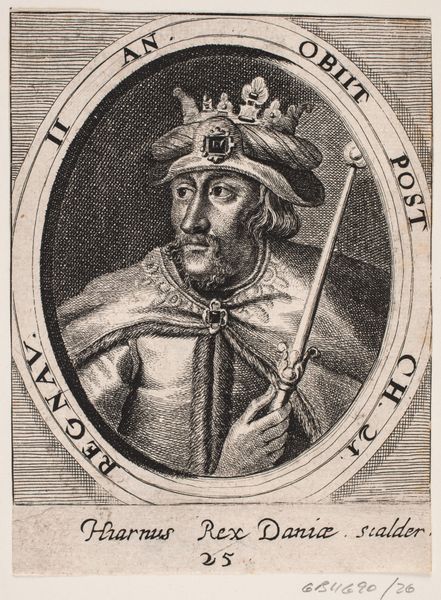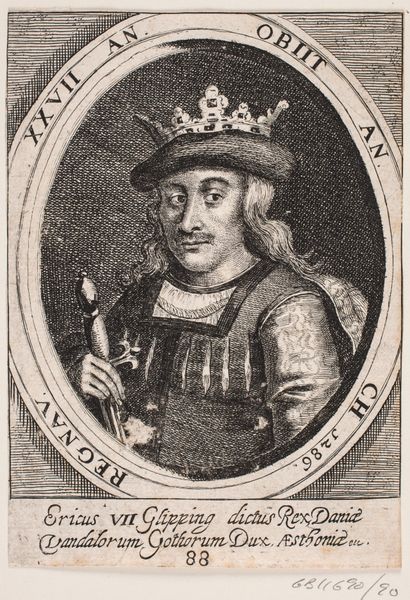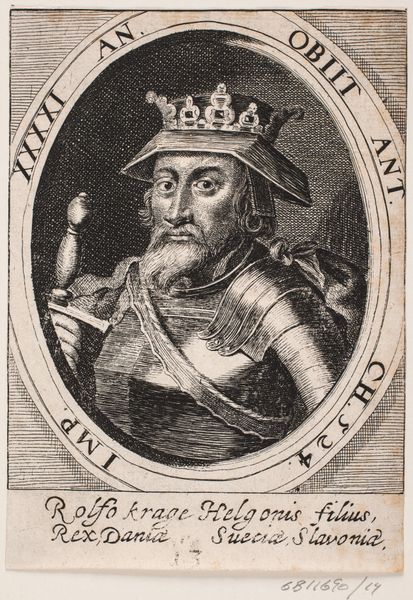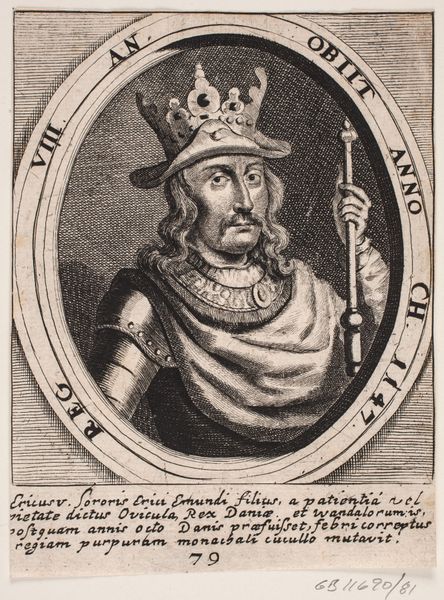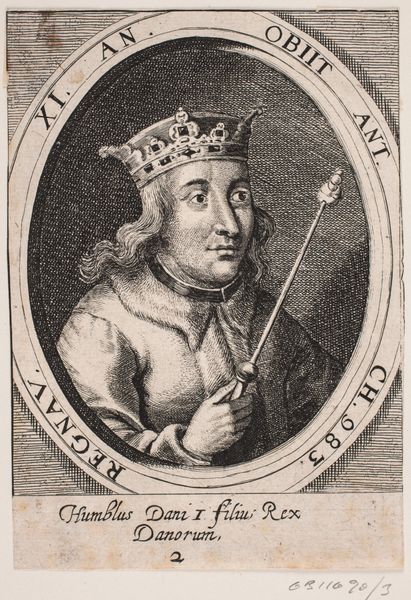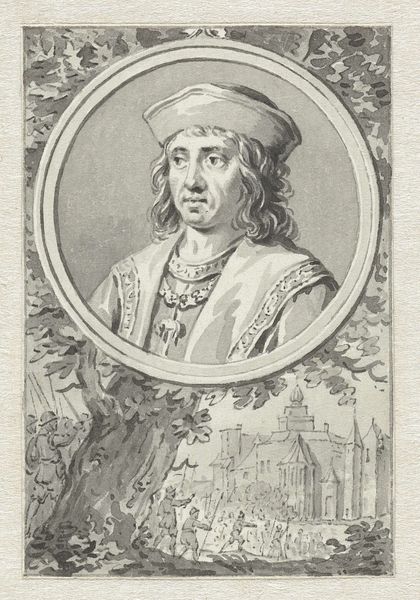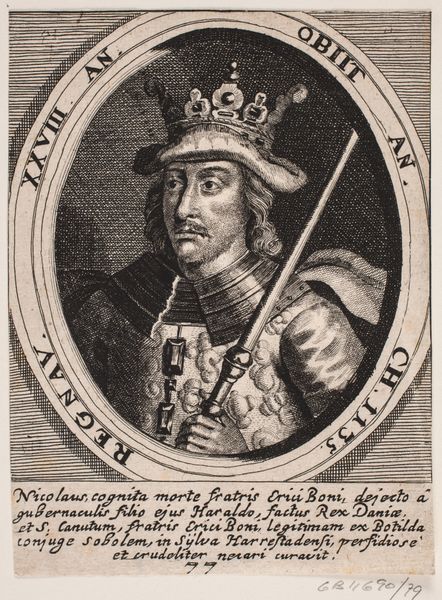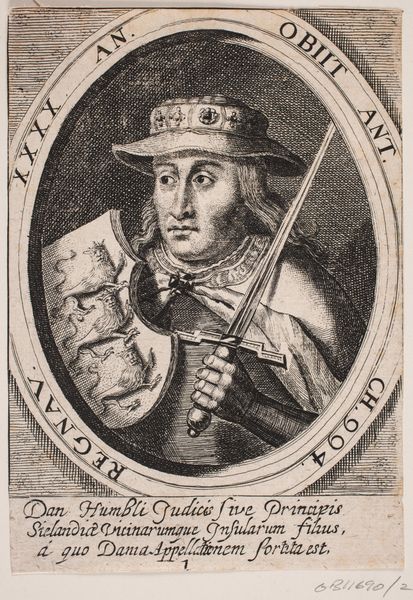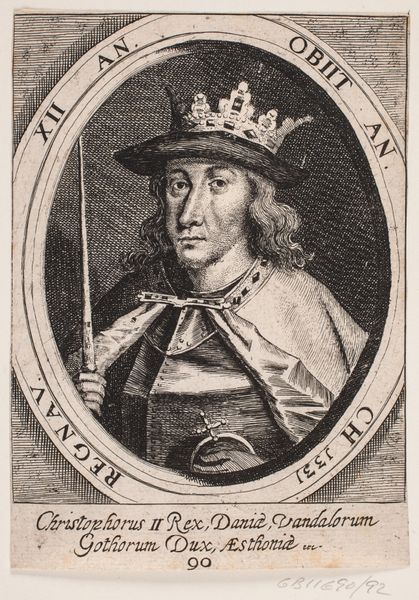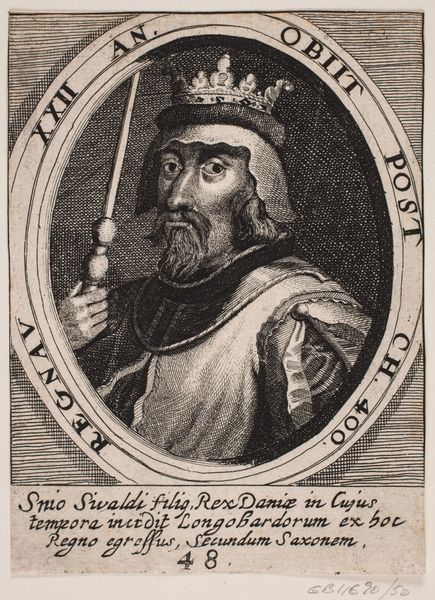
print, engraving
#
portrait
#
baroque
# print
#
caricature
#
history-painting
#
engraving
#
columned text
Dimensions: 140 mm (height) x 100 mm (width) (bladmaal)
Editor: Here we have "Kong Viglek", a 1646 engraving. It's a portrait encased in an oval, with text swirling around it, feels almost like a coin or a postage stamp, very formal and precise. What do you see when you look at it? Curator: Well, my eye is drawn to the detail, you know? The artist has really captured a certain… world-weariness in the King's eyes, despite all the royal regalia. The lines are so delicate, almost trembling, like life itself, etched on the plate with an almost frantic energy. It makes me wonder, what was going on in Denmark back then? I mean, who needed a royal portrait made this way? Editor: I hadn’t considered the fragility you described. Was this perhaps a common way to depict royals at that time, the Baroque period? Curator: Common maybe in form, perhaps. Portraiture was certainly booming. But the spirit? The sheer, unsettling *intimacy* of the gaze? That's what grabs me. And notice how the crown seems slightly too large for his head! I wonder if the artist intended some sly commentary... it is just a tiny little observation that tickles me to no end. Editor: It is humorous! What about the swirling text—does that offer any insights? Curator: Absolutely. In Latin, the inscription notes his reign and death – “he reigned and died.” These little biographical snippets ground the work, preventing the subject from becoming just another generic royal. Makes him somehow touchable. I suppose he, too, just wanted to be remembered somehow... Don't we all? Editor: Yes, definitely. I’m walking away with a newfound appreciation for historical portraiture. The piece felt formal at first but it is brimming with personality. Curator: Exactly! Art isn't always about grand gestures. Sometimes, it's about capturing a fleeting, fragile moment of shared humanity, or in this case, some light hearted critique of royal ego.
Comments
No comments
Be the first to comment and join the conversation on the ultimate creative platform.
